How to Track Down and Reclaim an Old 401(k)
Your career path may shift, but your retirement savings should stay with you. If you’ve changed jobs and unintentionally left a 401(k) behind, don’t worry—you can still may still be able to track down those funds. Millions of forgotten retirement accounts exist, and yours could be waiting to be claimed. Follow these steps to hopefully locate and regain control of your old 401(k).
Where to Look for Your Old 401(k)
With an estimated 30 million lost 401(k) accounts in the U.S. worth over $1.65 trillion, it’s easy to see how retirement savings can slip through the cracks. The good news? That money doesn’t just disappear.
If your previous plan was with a major provider like Fidelity, your current employer’s plan administrator is in the Portability Services Network, and your balance was under $7,000, it may have been automatically transferred to your new employer’s plan. Even if that’s not the case, federal regulations protect those funds, making it possible to recover them.
Here are seven places to check:
1. Your Former Employer – One place to start is with your previous company’s HR or benefits department. They should be able to direct you to the financial firm that managed your 401(k) when you were employed.
2. The Plan Administrator – If you remember which financial institution handled your 401(k), reach out to them directly. Be prepared to provide details like your name, previous employer, and employment dates.
3. Your State’s Unclaimed Property Database – Every U.S. state maintains a free database where you can search for unclaimed assets. Simply search online for “[Your State] unclaimed property” and look for official government websites ending in .gov.
4. Pension Benefit Guaranty Corporation (PBGC) – If your past employer offered a pension or terminated a defined benefit plan, use the PBGC’s search tool to see if your assets are listed.
5. Employee Benefits Security Administration (EBSA) Abandoned Plan Program – If your old employer went out of business, the Department of Labor’s EBSA database may be able to help you locate your abandoned 401(k).
6. EBSA Retirement Savings Lost and Found Database – This newer government tool is designed to help workers track down lost retirement savings. If your search comes up empty, check back later, as the database is still expanding.
7. National Registry of Unclaimed Retirement Benefits (NRURB) – This private registry helps people locate unclaimed retirement funds from former employers. You’ll need to enter your Social Security number to search their records.
Why Finding Your Old 401(k) Matters
Unclaimed retirement funds have the potential to affect your financial future. Here’s why it may be beneficial to track them down:
● It’s your money – Reclaiming lost 401(k) funds can help ensure they’re working for your future, not sitting idle.
● You may be paying hidden fees – Some plans charge ongoing fees, which could eat into your balance over time.
● You could have better investment options – Old plans may have limited or high-cost investments, while consolidating funds could give you more control over your portfolio.
What to Do Once You Find Your Old 401(k)
After locating your account, you’ll have a few options for what to do with the funds. Here are four options to consider:
1. Keep the Money in Your Old 401(k) – Some plans allow former employees to leave funds in place, which may be a good option if the investment choices and fees are favorable. However, you won’t be able to contribute further, and required minimum distributions (RMDs) will eventually apply (starting at age 73).
2. Roll It into Your New Employer’s 401(k) – If your current job offers a 401(k), you may be able to consolidate your old account into the new one. This may simplify management and keeps your retirement savings in one place.
3. Move It to an IRA – Rolling over your 401(k) into an Individual Retirement Account (IRA) may offer more investment flexibility and potentially lower fees. Just keep in mind that IRAs have different legal protections than 401(k) plans.
4. Cash Out (Last Resort) – While you can withdraw the funds, doing so before age 59½ usually triggers income tax and a 10% early withdrawal penalty. This could significantly reduce your savings, so consider this option only if absolutely necessary.
Final Thoughts
Losing track of a 401(k) is common, but it doesn’t mean the money is gone forever. By taking the time to search, you may be able to reclaim what’s yours and make informed decisions about how to reinvest it. Whether you roll it into a new plan, move it to an IRA, or leave it where it is, regaining control of your retirement savings is a smart financial move.
Sources:
https://www.fidelity.com/learning-center/smart-money/how-to-find-old-401k
Disclosures:
This information is an overview and should not be considered as specific guidance or recommendations for any individual or business.
This material is provided as a courtesy and for educational purposes only.
These are the views of the author, not the named Representative or Advisory Services Network, LLC, and should not be construed as investment advice. Neither the named Representative nor Advisory Services Network, LLC gives tax or legal advice. The tax information contained herein is general and is not exhaustive by nature. Federal and state laws are complex and constantly changing.
All information is believed to be from reliable sources; however, we make no representation as to its completeness or accuracy. Please consult your own legal or Financial Advisor for further information.

